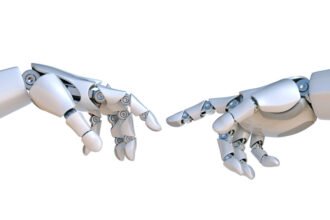 With exponential trends of data growth and computational power colliding, the world is literally drowning in data. There’s too much data, and not enough analysis.
With exponential trends of data growth and computational power colliding, the world is literally drowning in data. There’s too much data, and not enough analysis.Fortunately, companies are using technology to capture and integrate data and sophisticated mathematical procedures to analyze data and make better decisions—decisions that ultimately improve the customer experience.
An article from The Economist, “Business by the Numbers”, highlights how companies are using algorithms to make book recommendations, choose optimum delivery routes for packages and even route calls to agents that can best diagnose a particular problem.
While the term “algorithm” sounds like geek-speak, the article notes algorithms are nothing more than, “a step by step method for doing a job.” Coupled with the power of a computer, “algorithms can execute tasks with blinding speed using vast amounts of data.”
But how do algorithms improve the customer experience?
Take for example, something that on the surface sounds easy, but actually is very complex—package delivery.
We often take for granted the operational efficiencies and supply chains of companies we rely on for package delivery. For example, we …
 With exponential trends of data growth and computational power colliding, the world is literally drowning in data. There’s too much data, and not enough analysis.
With exponential trends of data growth and computational power colliding, the world is literally drowning in data. There’s too much data, and not enough analysis.Fortunately, companies are using technology to capture and integrate data and sophisticated mathematical procedures to analyze data and make better decisions—decisions that ultimately improve the customer experience.
An article from The Economist, “Business by the Numbers”, highlights how companies are using algorithms to make book recommendations, choose optimum delivery routes for packages and even route calls to agents that can best diagnose a particular problem.
While the term “algorithm” sounds like geek-speak, the article notes algorithms are nothing more than, “a step by step method for doing a job.” Coupled with the power of a computer, “algorithms can execute tasks with blinding speed using vast amounts of data.”
But how do algorithms improve the customer experience?
Take for example, something that on the surface sounds easy, but actually is very complex—package delivery.
We often take for granted the operational efficiencies and supply chains of companies we rely on for package delivery. For example, we need a package delivered to Manhattan by 10am the next day. Using any of the global shipping companies, we would have a high degree of confidence in that package arriving on-time. However, peer behind the curtain and you’ll see some pretty advanced algorithms make all this possible.
The Economist article mentions how UPS uses algorithms to route millions of packages each day:
“The simplest routes are easy to draw up. If a driver only has three destinations to visit, he can take only six possible routes. But the number of possible routes explodes as the destinations increase. There are more than 15 trillion, trillion possible routes to take on a journey with just 25 drop off points—and an average day for a UPS driver in America involves 150 destinations.”
Now add other variables such as transportation schedules, special delivery times and shipping options (plane, train, truck, boat etc) and you’ll begin to see there is a real science to ensuring timely package delivery.
Algorithms help tackle complicated challenges—especially necessary as companies race to take care of their “best” and/or most profitable customers. I am sure you will agree that our world is becoming more—not less—complex. As data volumes and decision options increase, algorithms and the systems that run them take on added importance.
Powerful and well designed algorithms are only part of the story in how companies are taking better care of customers. As the Economist article points out, an algorithm is only as good as the systems, data, processes and people behind it.
Nonetheless, algorithms are helping companies increase competitiveness, improve efficiencies and enhance the customer experience.









